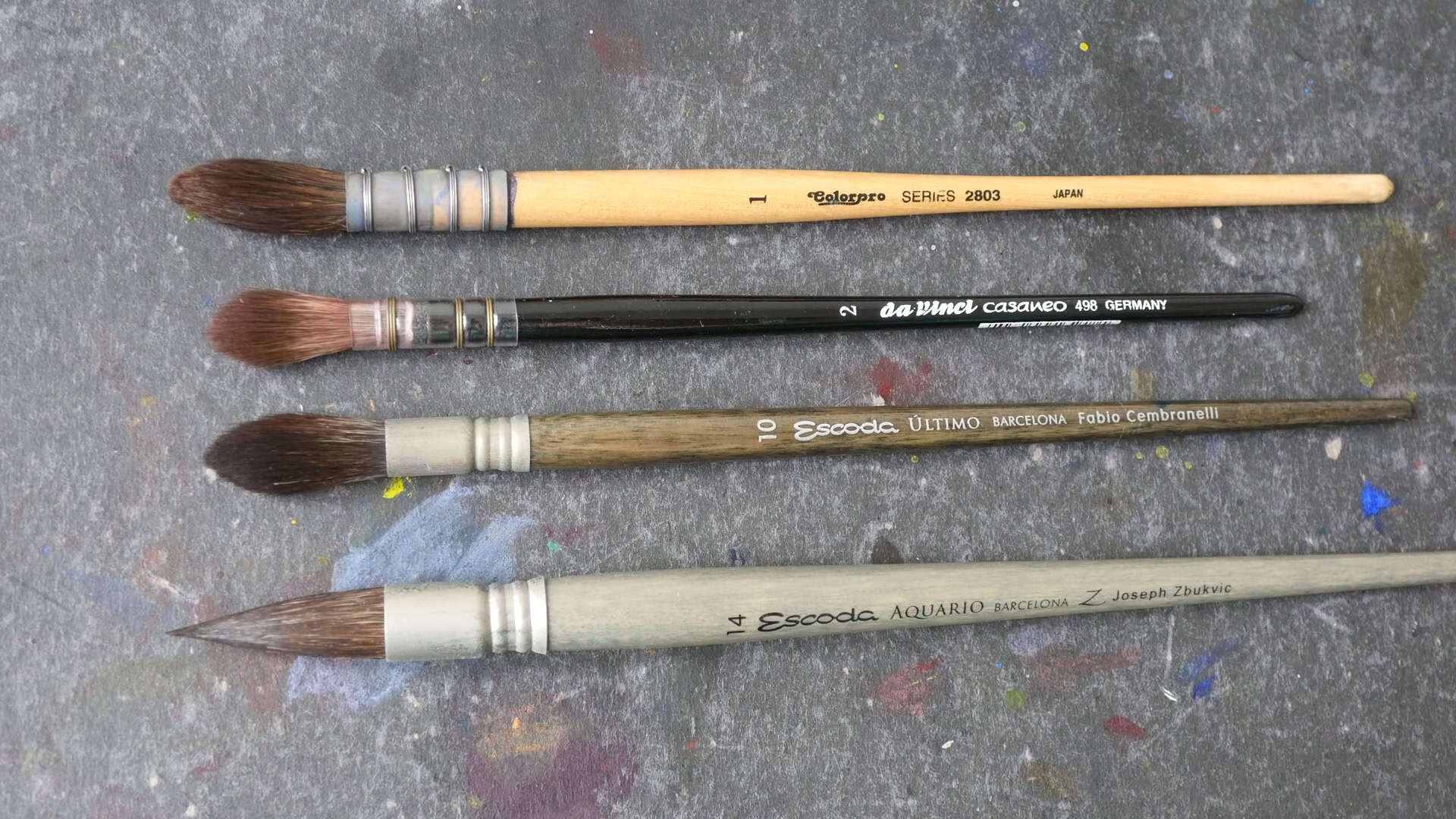When choosing watercolor brushes, you’ll often hear about quill and mop brushes.
These terms are sometimes used interchangeably, but are they the same?
If you’re wondering which one to use for your painting, you’re in the right place.
In this guide, I’ll break down the differences, explain how they work, and help you decide which brush suits your needs best.
Contents
What Are Quill and Mop Brushes?
Overview of Quill Brushes
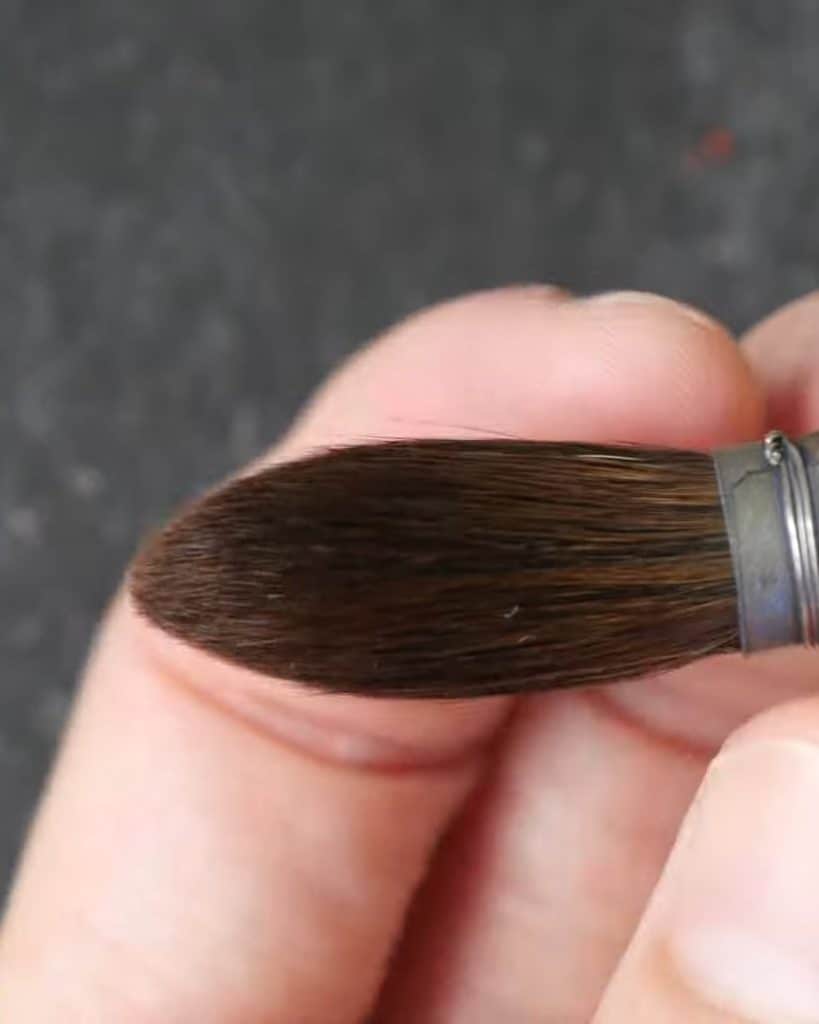
A quill brush has a unique construction that dates back centuries. Originally, brush makers used actual bird quills to hold the hairs together.
Over time, modern materials like plastic and metal wires replaced natural quills.
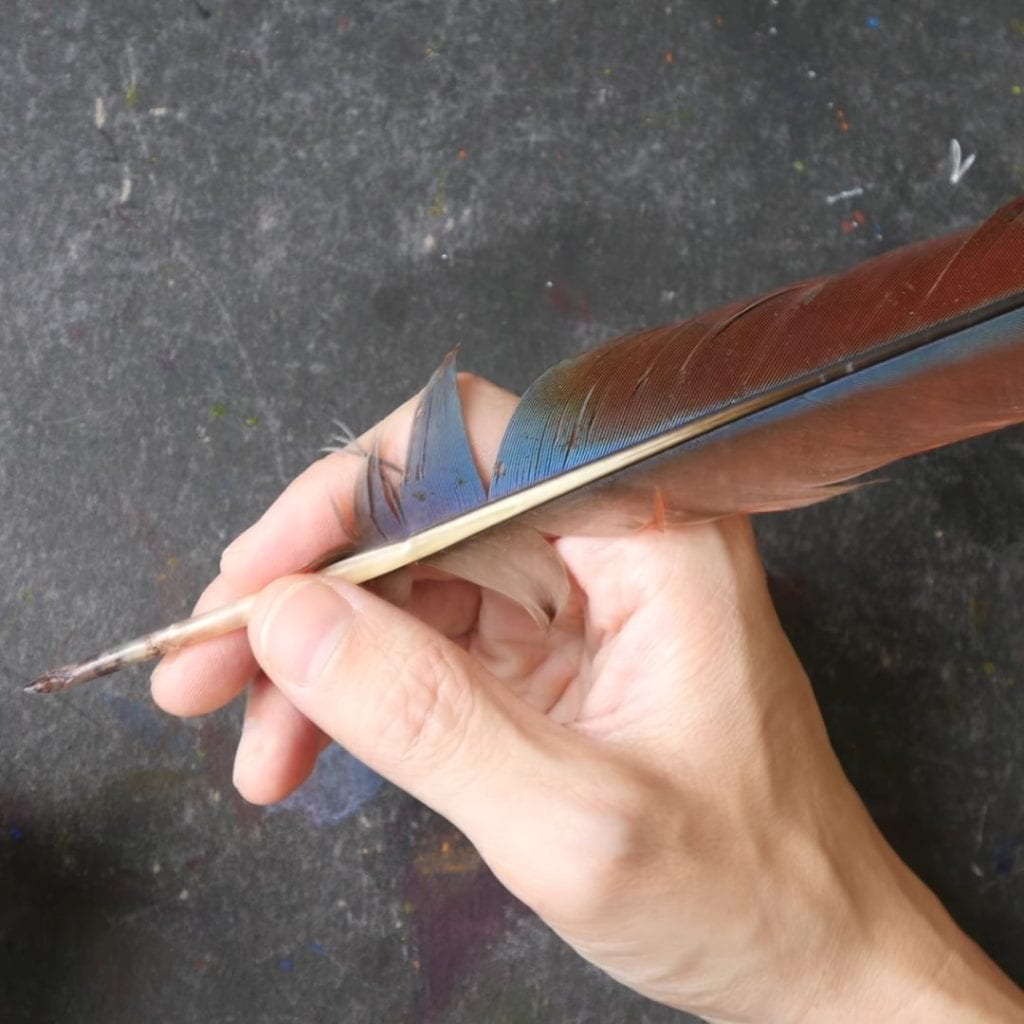
The word “quill” comes from the main feather of a bird. In the past, brush makers would stuff hair into a hollow quill and then use string to secure it.
This design allowed the brush to hold more water, making it ideal for large washes.
I’m not sure what type of feathers were used historically, but they had to be large enough to hold a significant amount of hair.
Smaller quills, like the one I have from a parrot, wouldn’t be big enough to work effectively.
Overview of Mop Brushes

A mop brush looks similar to a quill brush but is usually made with a traditional ferrule (the metal part that holds the hair).
It also has a fuller, softer belly, which helps it absorb and release water smoothly.
A mop brush has a metal ferrule just like a round brush, but with much more hair. This gives it a softer, fuller shape.
A great example is the Escoda Ultimo, which uses synthetic squirrel hair.
Modern Quill and Mop Brush Designs
Although traditional quill and mop brushes were made differently, their modern versions have evolved.
Let’s take a closer look at how these brushes are constructed today.
Structure of a Quill Brush
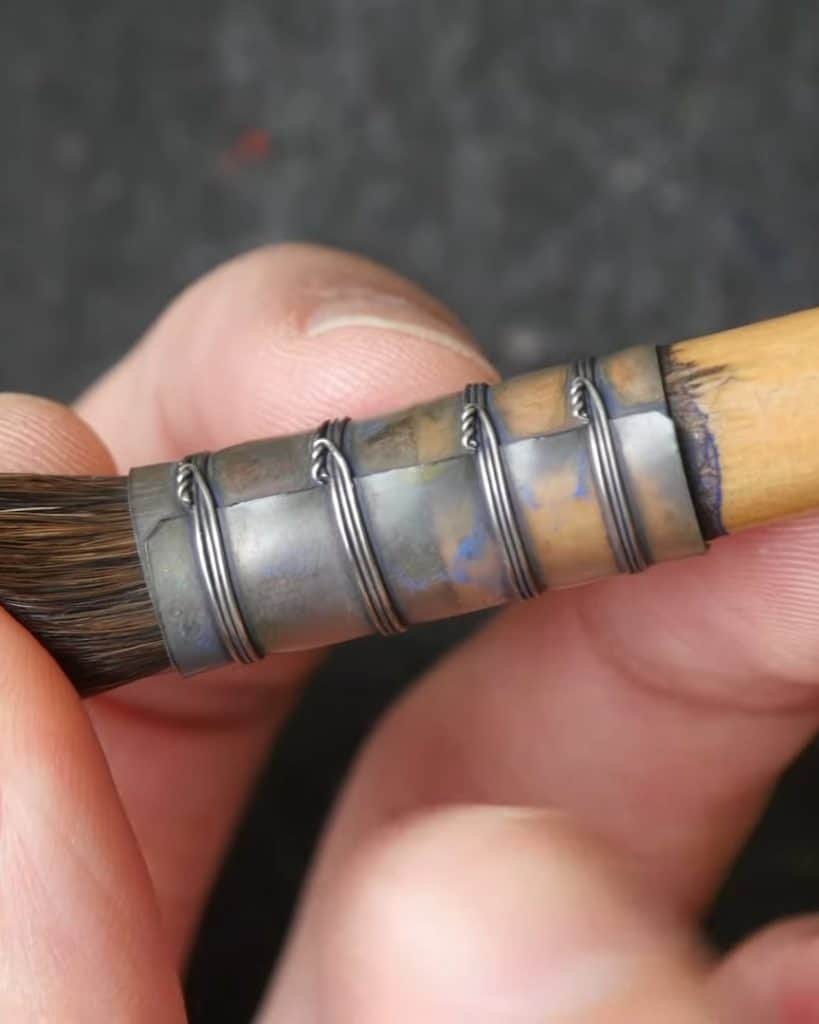
Modern quill brushes have hairs held together by plastic casings and secured with thin metal wires.
A good example is a squirrel hair quill brush, which has a soft and absorbent tip.
You’ll notice that the hairs are almost visible through the plastic casing, which helps maintain their shape.
Structure of a Mop Brush

Mop brushes, like the Escoda Ultimo, look more like oversized round brushes.
They have a traditional ferrule, the metal part that holds the hairs together.
Since these brushes use synthetic or natural hair, they retain a softer, more flexible structure.
When dry, the hairs may appear floppy, but they perform just like a quill brush once wet.
Compare Quill Brushes vs. Mop Brushes vs. Round Brushes
Now that we’ve covered their construction, let’s compare them to round brushes.
If you’ve ever wondered whether a quill or mop brush is better than a round brush, it all comes down to their size, shape, and water capacity.
Shape and Size Differences
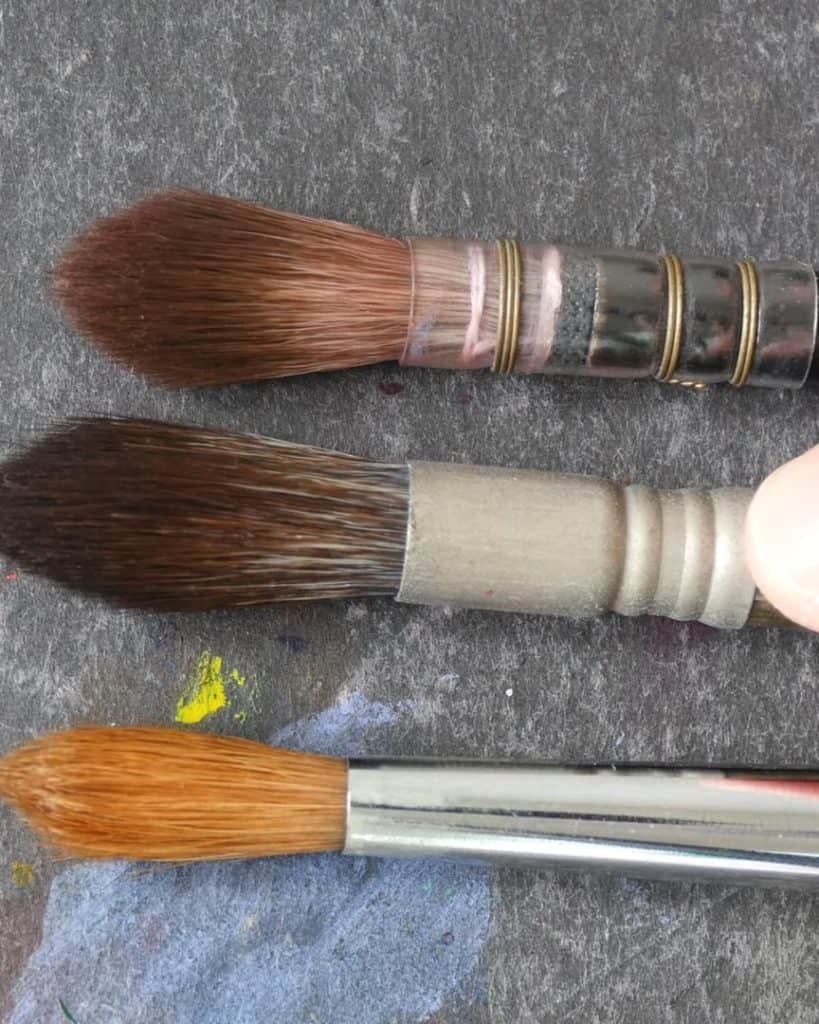
At first glance, a dry quill, mop, and round brush might look similar. But once wet, the differences become clearer.
Quill and mop brushes have much larger bellies, which means they hold more water.
This makes them great for broad strokes and washes, while round brushes are better for details.
Brush sizes also vary across brands.
For example, a size 1 Colorpro brush might be bigger than a size 2 Da Vinci quill. Meanwhile, a size 10 Escoda could be the same size as a size 1 Colorpro. Because sizing isn’t standardized, it’s always best to compare brushes in person if possible.
Water-Holding Capacity

The most significant advantage of quill and mop brushes is their ability to hold water.
Since they have more hair packed into their heads, they can carry a lot more pigment.
This makes them ideal for watercolor artists who need to paint large areas without constantly reloading their brushes.

In contrast, round brushes hold less water, which makes them more precise but not as effective for washes.
If you’re working on fine details, you might not want excess water pooling on your paper, so a round brush would be the better choice.
Ferrule Length and Belly Shape

One noticeable difference between these brushes is the length of the ferrule. Round brushes usually have a longer ferrule, while quill and mop brushes have shorter ones.
Quill and mop brushes also have larger bellies, which means they taper more dramatically. This helps them hold more water and create soft, blended strokes.
On the other hand, round brushes taper more evenly, making them better for controlled lines and small details.
Performance and Usage of Quill and Mop Brushes
When choosing between these brushes, it’s essential to think about how they perform.
While they might look similar when dry, their real differences show up when painting.
Best Uses for Quill and Mop Brushes

If you aim to cover large areas with smooth washes, quill and mop brushes will do the job.
Their ability to hold more water makes them perfect for backgrounds, skies, and gradients. However, they may not be the best choice if you need precision.
Since these brushes hold so much water, they’re not great for detailed work. When painting fine lines or intricate shapes, using a round brush will give you better control.
Why Mop and Quill Brushes Are Floppy
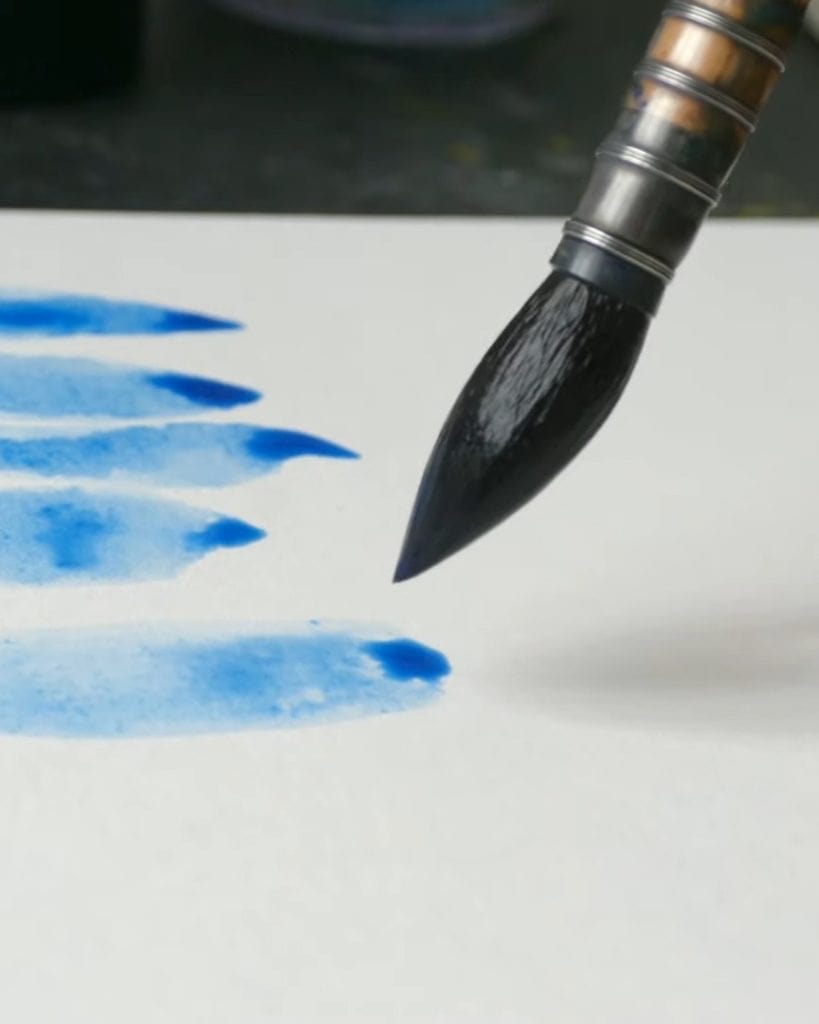
One thing you’ll notice when using quill and mop brushes is that they are quite floppy. Unlike round brushes, they don’t snap back into shape as easily.
For example, when you lift a mop brush, the hairs may tilt in one direction and stay that way.
This can make it tricky to paint precise details because the hairs don’t always return to their original form.
A round brush is a better option if you prefer a brush with more control.
Brush Recommendations
Now that we’ve covered the differences, here are some brush recommendations based on my experience.
Best Quill Brush Options

If you’re looking for a high-quality quill brush, I recommend the Da Vinci Casaneo.
It holds a better point than most squirrel brushes, making it an outstanding balance between detail and washes.
Best Mop Brush Options

For a synthetic mop brush, go for the Escoda Ultimo. It mimics natural squirrel hair really well.
If you prefer real squirrel hair, check out the Escoda Aquario—but honestly, the performance difference is minimal.
Final Thoughts
So, which brush should you choose? A quill or mop brush is perfect if you want smooth washes and water-loaded strokes.
If you need precision and fine details, stick with a round brush.
I hope this guide helped you understand the differences between quill and mop brushes!
Which brush do you prefer? Let me know in the comments—I’d love to hear your thoughts.

